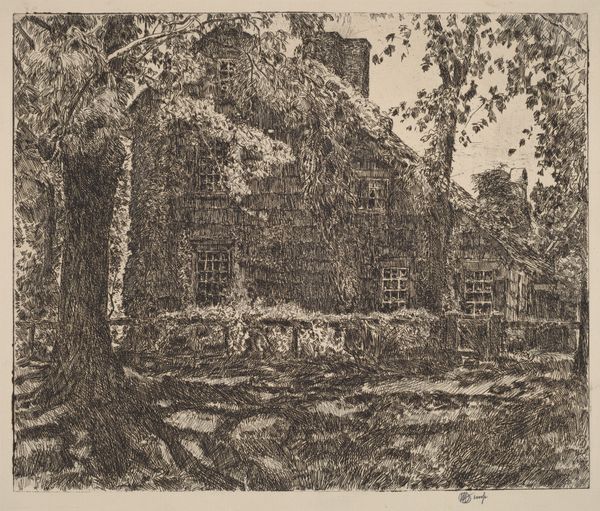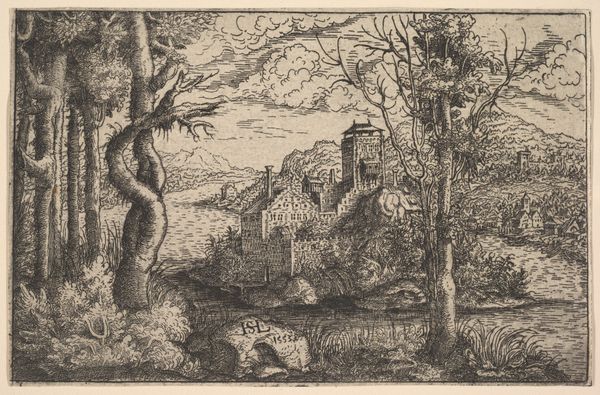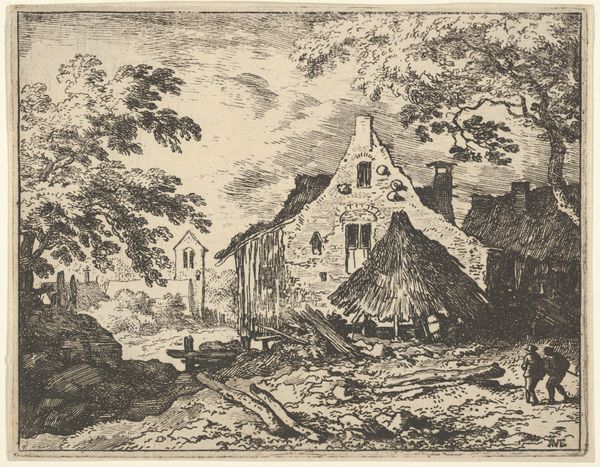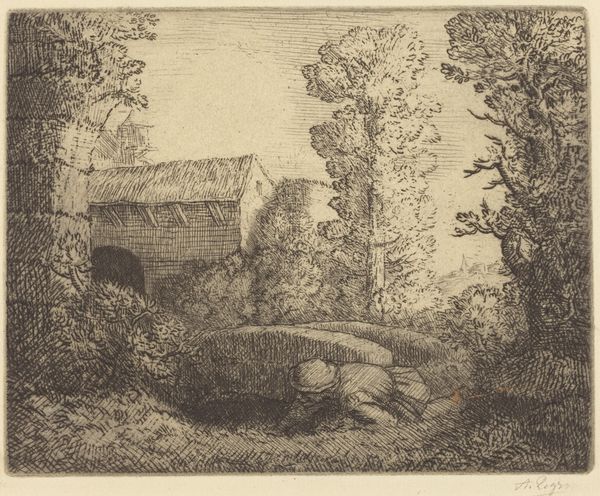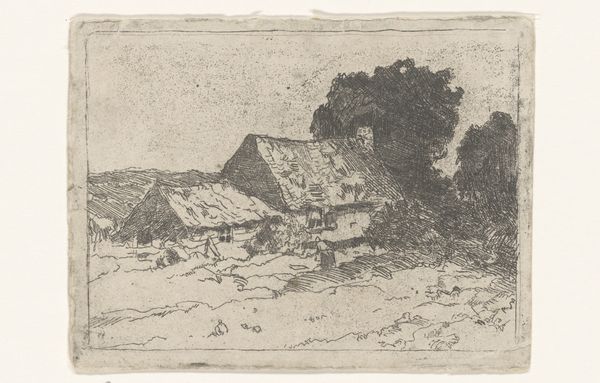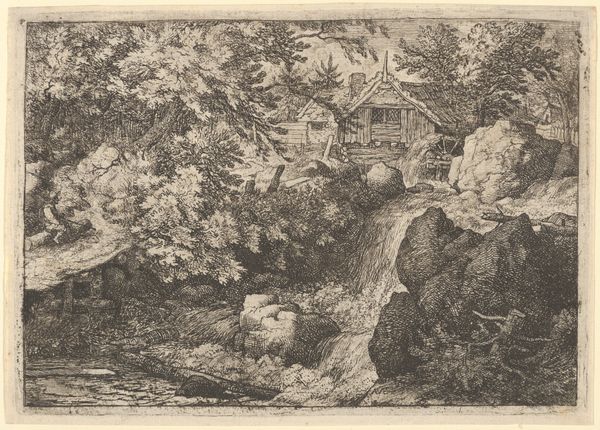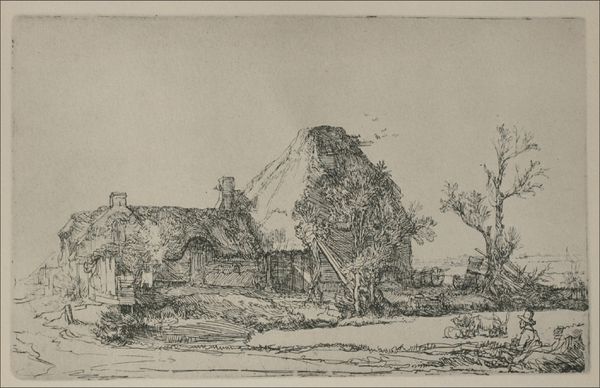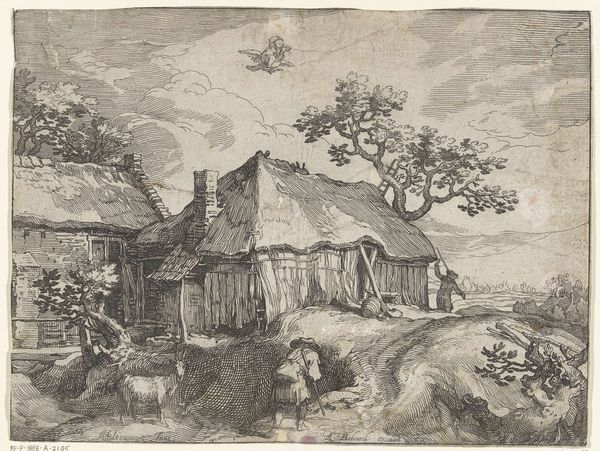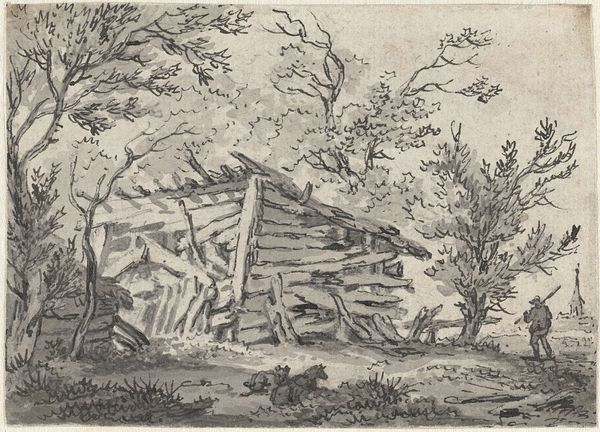
drawing, print, etching, architecture
#
tree
#
drawing
#
dutch-golden-age
# print
#
etching
#
landscape
#
etching
#
architecture
Dimensions: Plate: 4 1/8 × 5 1/8 in. (10.5 × 13 cm) Sheet: 4 7/16 × 5 1/2 in. (11.3 × 14 cm)
Copyright: Public Domain
Curator: This is Allart van Everdingen's "The Straw Hut Seen from Behind," an etching created sometime between 1621 and 1675. It's part of the collection here at the Met. Editor: The first word that pops into my head? Rustic. I see this wonky hut, nestled in what feels like an untamed wilderness. It's like a storybook dwelling, maybe a bit dilapidated, but full of character. Curator: Everdingen was one of the pioneers of the Dutch Golden Age landscape. He brought the ruggedness of Scandinavian scenery – which he experienced firsthand – into Dutch art, known more for its calm, level landscapes. That interest in the raw and perhaps "imperfect" wilderness is striking. Editor: Imperfect is spot on. The texture is amazing—look at how he’s rendered the straw of the roof. Each stroke seems deliberate, capturing this feeling of natural decay and resilience at once. Curator: And look at how he frames the scene, the hut viewed from behind. The figures in the distance offer a sense of scale. The play of light and shadow also directs our gaze deeper into the landscape, beyond the immediate subject. The institution, and maybe society at large, traditionally looks straight on—here it’s like we get to catch the quiet moment of this building facing into itself. Editor: That makes me think about the position of the viewer too, skulking, maybe in the wilderness with this building! Perhaps its decay isn’t a downfall but a type of growth. It seems almost alive, this little hut, breathing within the landscape. The human figures appear less vibrant, strangely. Curator: Yes! Its appeal probably had to do with its associations. As landscape emerged as an independent genre, the rural world became a refuge of authentic value, sometimes in pointed contrast to urban mercantile culture. In a society increasingly defined by the pursuit of riches, what did the symbolism of the imperfect rural provide? Editor: This etching whispers something about simplicity, maybe even escape. The way Everdingen used this artform almost renders the air alive. It’s a potent reminder of finding beauty in what’s often overlooked.
Comments
No comments
Be the first to comment and join the conversation on the ultimate creative platform.


